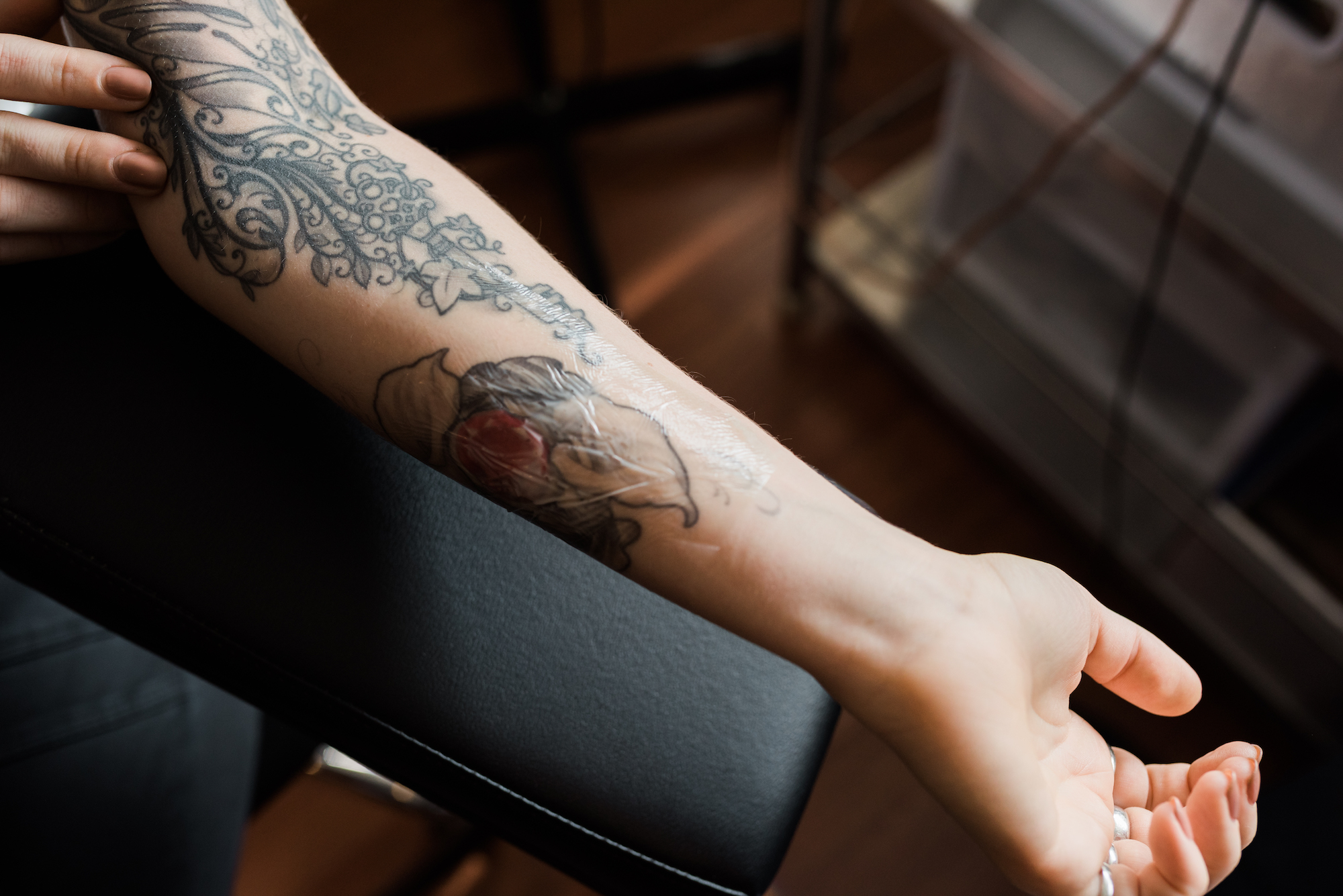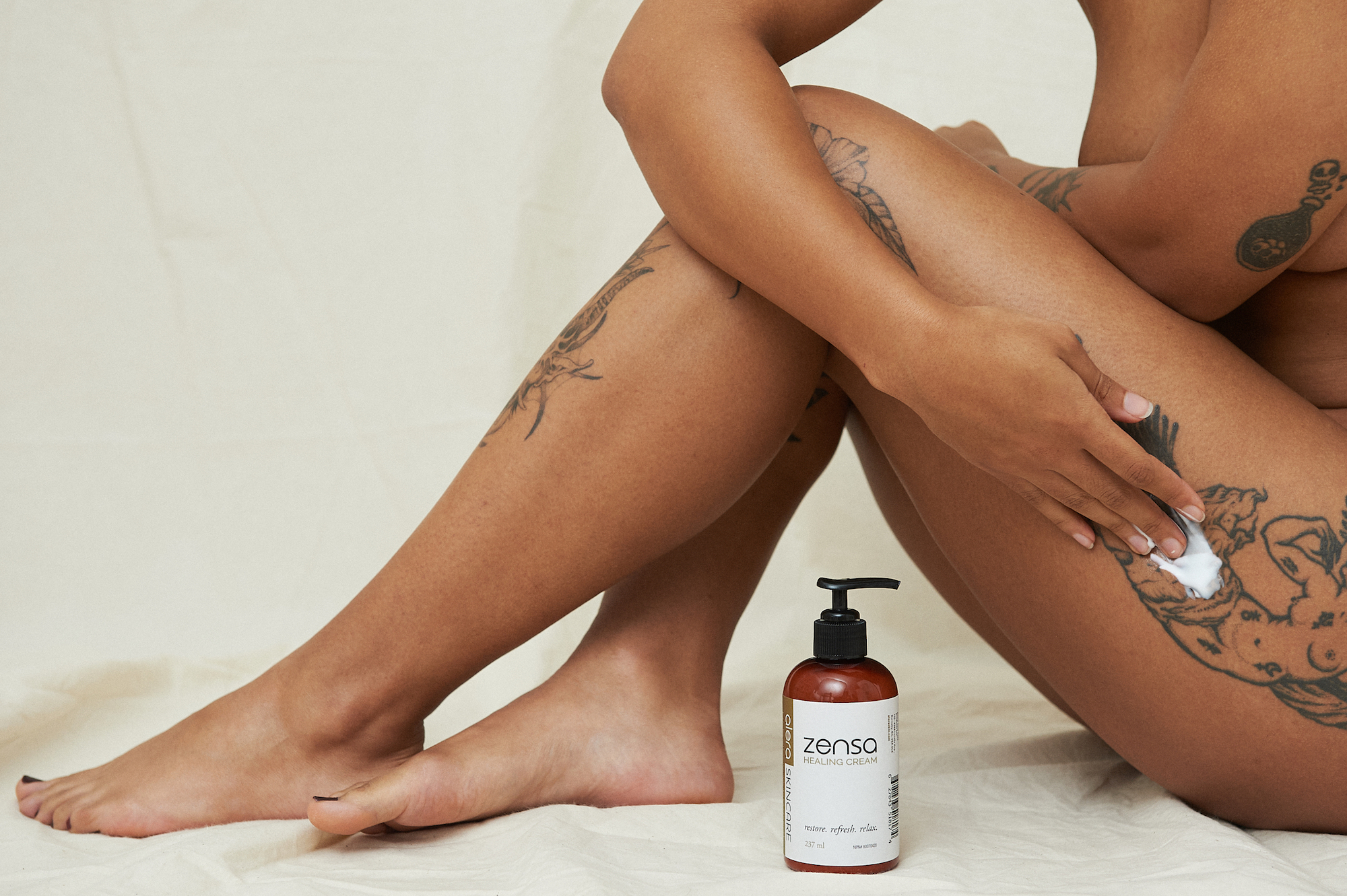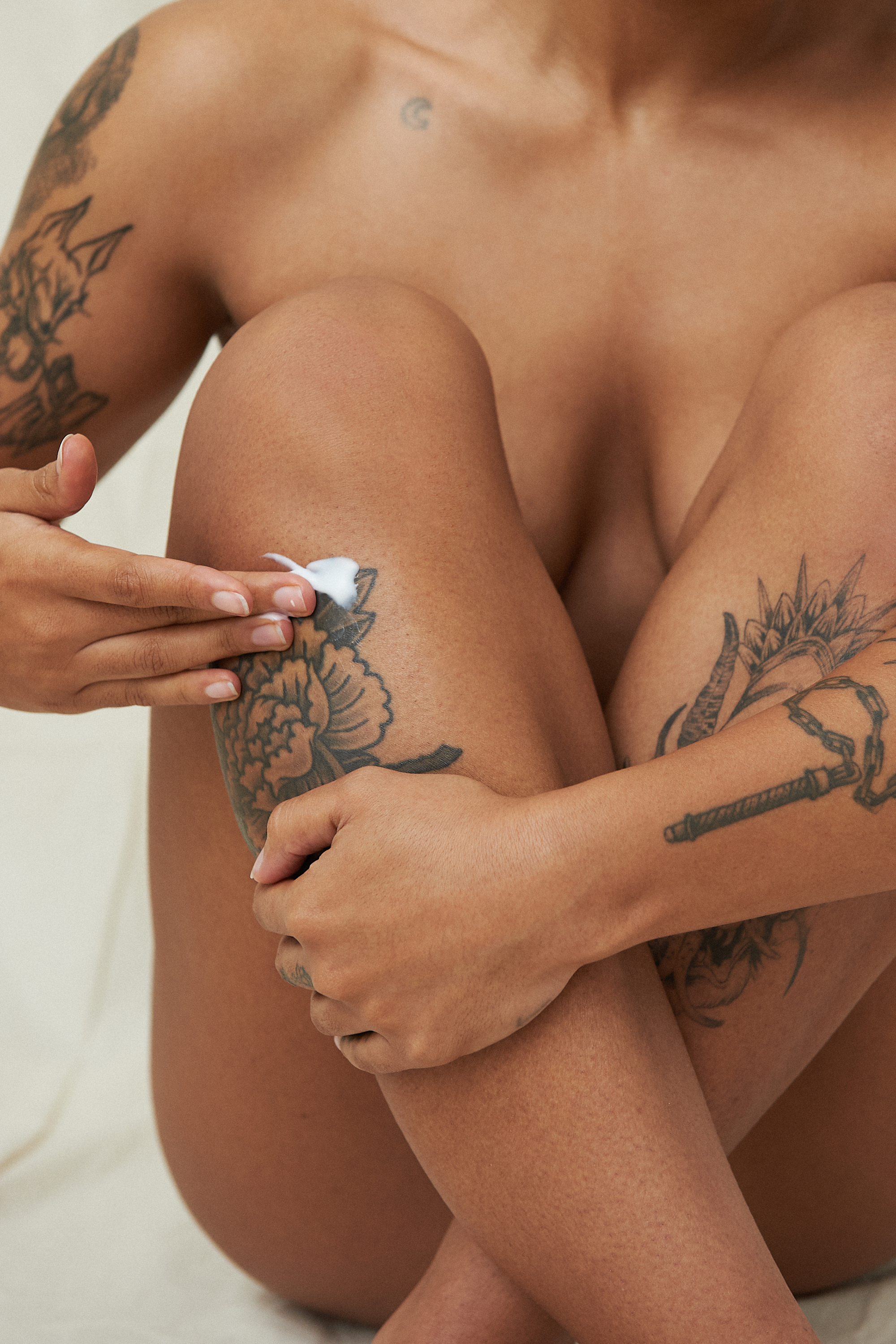What To Expect By Day During The Tattoo After-Care Process
What To Expect By Day During The Tattoo After-Care Process
After months of searching for the right artist and design, you've finally decided to get a tattoo. What you may not have considered is how essential your after-care routine is for keeping your ink looking fresh in the long term. A tattoo is a wound that requires your skin to repair itself. How you choose to take care of the area - especially during the first month - will determine your skin's health, comfort and appearance. A neglected tattoo after-care routine leaves you vulnerable to skin irritation, infection and scarring that can result in consequences from persistent pain to a prematurely faded tattoo. It is crucial to listen and follow your artist’s specific instructions. Every person’s tattoo healing journey is unique – depending on the ink used, the tattoo size, placement and other individual health factors. However, tattoos tend to follow the same path to recovery.
Here’s what you should generally expect, day-by-day, during the first few weeks of the healing process, and an overview of the best after-care practices to follow.
The First 24 Hours
Immediately after inking, your artist will place a bandage covering or a plastic dressing with an anti-bacterial, healing balm on the fresh tattoo. You should leave it on for anywhere from a few to 24 hours after finishing up at the studio. Depending on the specifics of your design, your artist may have you leave on this dressing for a bit longer. The covering shields the wound from any outside bacteria, irritation and wipes away any excess fluid from the area while allowing the ink to sink into the skin.
When the time comes, wash your hands thoroughly and carefully remove the bandage. The area will probably be red, sore and you may see some oozing from the blood, ink and plasma (a process referred to as weeping).

Gently clean the tattoo and surrounding skin with lukewarm water and antibacterial, fragrance-free soap. Pat the area dry with a new paper towel or a soft, freshly washed cloth. Follow up with a fragrance-free moisturizer designed for use on new tattoos, such as Aquaphor healing ointment or Zensa Healing Cream. Zensa Healing Cream contains potent, natural ingredients like calendula and grapefruit oils to reduce irritation and speed up the healing process. It has sunflower seed oil to brighten and preserve your tattoo’s original colour without impeding ink settling, too.
This practice is essential to wash away any fluids that could introduce germs into the area. Hydrating the wound is essential to prevent irritation and rebuild the skin barrier. Do not place another bandage on the tattoo, so the wound can breathe.
The Attentive Stage (Days 2-3)
The initial bleeding, swelling, redness, inflammation and weeping will likely still be present. Continue to wash and moisturize the tattooed area carefully twice a day. It is normal for the skin to feel like it’s sunburned during this period. It is vital in these early days to ensure that the wounded area remains clean and dry. Make sure to use clean bedding (that you don’t care about too much because it could become stained with blood or ink), take short and cool showers (immediately and gently pat yourself dry) and keep the fresh tattoo out of the sunlight.

It is normal to also feel a bit under the weather during the first 48-72 hours after getting a tattoo. While getting a tattoo is a form of artistic expression, it is also a medical procedure and your body needs time to recover from the injury. Regularly drinking water and a proper sleep schedule should help improve this general weakness. Contact your doctor if flu-like symptoms persist for over a week.
The Scabbing Stage (Days 4-6)
Around four days after getting your tattoo, the redness and drainage should subside. The tattoo often takes on a cloudy appearance as scabs start to form over the ink. Scab formation is an essential part of the wound-healing process and means that a healthy, fresh skin layer is forming – a key sign your skin is on the path to recovery.
Do not ever peel off the scabs. Manipulating this vulnerable tissue in any way can cause irritation, infection and could peel off some of the pigment, which will either leave your tattoo patchy or cause it to fade before the healing process is complete.
Make sure to keep up with your cleansing and moisturizing routine. Use your gentle soap, lukewarm water and hydrating, fragrance-free cream twice daily. Always pat dry to prevent any rubbing or cracking of the skin.
The Peeling Stage (Days 7-14)
By day six or seven, scabs should start to cover and thicken on the freshly tattooed area. During this week of your healing journey, the skin will be flaky and may start feeling a bit itchy. This is completely normal as the dry skin is getting ready to exfoliate itself away as the top layer of the skin heals. Resist the urge to scratch to avoid any skin infections, severe inflammation or distortion in the design’s final look.

It is particularly important to frequently (not excessively) moisturize your tattoo and the surrounding skin during this stage. Ingredients in Zensa Healing Cream, such as shea butter and cucumber extract, can help soothe these itching symptoms and alleviate any dryness to prevent skin cracking, which leaves the wound more vulnerable to infections.
If you’re still experiencing any redness or swelling at this stage, you may have an infection. Contact your artist or doctor right away to ensure the wound is healing properly.
The Next Two (To Four) Weeks
After around the 14-day mark, the itchiness and flaky patches should go away. Your scabs are likely significantly improved or gone at this stage. Between days 15 and 30, the top layer of skin will finish healing. It is common for the skin on the tattooed area to appear fairly dry and dull with the cloudy-looking ink underneath. Be consistent with regularly applying your moisturizing cream to keep the area hydrated.
During this period, the dead skin will exfoliate itself away. The tattoo ink will become vibrant again once dead skin falls off and the new, nourished top layer of skin comes to the surface. The wound-healing process allows the ink to bond with a fresh developing layer of skin to become one with your complexion.

Throughout this stage, maintain your daily skin after-care routine and hygiene habits. Do not exfoliate the area and wear loose clothing over the ink when going out to shield your tattoo from direct sunlight exposure.
Avoid scratching or picking at the tattoo. Even though the wound is no longer peeling, this practice can still cause scarring, inflammation and ruin the final results of the tattoo that you’ve been working hard to care for during this time.
Long-Term After-Care & Outlook

While your tattoo may appear healed after a month, the wound-repairing is still underway below the surface. When you get a tattoo, the artist injects ink into the top and middle skin layers. This deeper middle layer is thicker and takes longer to heal. Once your tattoo stops looking dry and cloudy, feel free to moisturize it less frequently and implement an overall beneficial skincare routine (that includes this area of the body). This milestone should happen between the four and six-week mark after getting inked.
The next three to six months signify the end of the initial healing process before beginning maintenance mode.
Tattoo After-care FAQs:
What should you avoid after getting a tattoo and for how long?
Avoid any prolonged exposure to water and sunlight. Keep your showers short (and lukewarm) and refrain from going swimming for at least three weeks after getting inked or until the wound has fully healed. Exposing your fresh tattoo to chlorine from swimming pools and bacteria or other contaminants from natural bodies of water (oceans, lakes, etc.) can have serious implications for your health. Also, do not shave on or near the tattooed area for at least a month.
Refrain from anything that results in friction or sweating. These lifestyle habits include wearing tight-fitting clothes, saunas, intense exercising and sexual activity. When choosing an outfit, opt for breathable fabrics like cotton to ensure that there’s no trapped moisture resting against your skin. You can resume your gym sessions around three to four weeks in your tattoo healing journey (or whenever all of the peeling stops).
Be selective in what product(s) and how frequently you apply it to your fresh tattoo. Never apply a fragrant or harsh soap on the wound. Using a healing cream is important, but make sure not to overdo it. Overly generous layers of healing cream or using a thick balm, like Neosporin, on the area can cause an infection. Apply a thin layer when practicing your everyday routine.

What factors affect the length of your tattoo healing journey?
Proper after-care hygiene is the most crucial habit that can promote healthy and relatively quick healing. However, optimizing your body’s overall vitality and skin health also aids the wound healing process. Especially in the immediate days after getting a tattoo, stay away from alcohol and cigarettes, drink lots of water and eat a healthful, well-balanced diet. Wearing loose-fitting clothes for sun protection and taking quick showers are helpful habits to speed up the process, too.
When should you seek out advice from your artist or a medical professional?
Some signs of a potential infection include: weeping that lasts longer than two or three days after getting the tattoo, hives, rashes, severe pain or itching on and near the tattooed area, persistent redness and scarring. These symptoms each indicate that you could have an infection or an allergic reaction to the ink or a product you used on the fresh wound.
If you experience any fever or chills shortly after getting a tattoo, seek medical attention immediately.
How does tattoo after-care relate to fading?
Do not confuse temporary “fading,” a normal part of the healing process, and permanent fading during your after-care journey. As previously mentioned, scabbing makes the fresh tattoo cloudy until a new layer of skin comes to the surface and “restores” the tattoo’s vibrancy. Permanent scarring would most likely result from peeling off the scabs manually (instead of letting them fall off naturally), itching the area, skin irritation or infection (which, in most cases, are easily preventable outcomes when you adhere to proper after-care practices).
Discover the best habits to prevent a tattoo from fading HERE.
